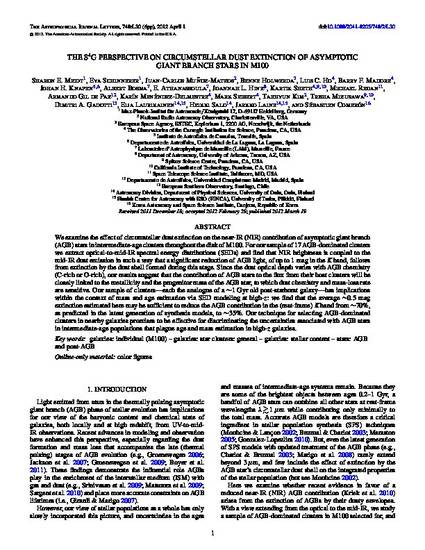
We examine the effect of circumstellar dust extinction on the near-IR (NIR) contribution of asymptotic giant branch (AGB) stars in intermediate-age clusters throughout the disk of M100. For our sample of 17 AGB-dominated clusters we extract optical-to-mid-IR spectral energy distributions (SEDs) and find that NIR brightness is coupled to the mid-IR dust emission in such a way that a significant reduction of AGB light, of up to 1 mag in the K band, follows from extinction by the dust shell formed during this stage. Since the dust optical depth varies with AGB chemistry (C-rich or O-rich), our results suggest that the contribution of AGB stars to the flux from their host clusters will be closely linked to the metallicity and the progenitor mass of the AGB star, to which dust chemistry and mass-loss rate are sensitive. Our sample of clusters—each the analogue of a ∼1 Gyr old post-starburst galaxy—has implications within the context of mass and age estimation via SED modeling at high-z: we find that the average ∼0.5 mag extinction estimated here may be sufficient to reduce the AGB contribution in the (rest-frame) K band from ∼70%, as predicted in the latest generation of synthesis models, to ∼35%. Our technique for selecting AGB-dominated clusters in nearby galaxies promises to be effective for discriminating the uncertainties associated with AGB stars in intermediate-age populations that plague age and mass estimation in high-z galaxies.
Meidt, Sharon E., et al. "The S4G Perspective on Circumstellar Dust Extinction of Asymptotic Giant Branch Stars in M100." 2012. The Astrophysical Journal Letters 748(2): 6 pp.

© 2012. The American Astronomical Society. All rights reserved.
https://doi.org/10.1088/2041-8205/748/2/L30